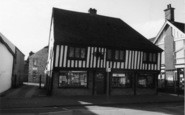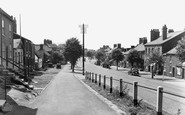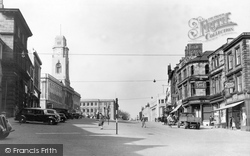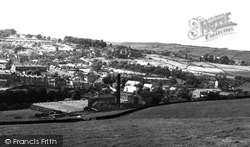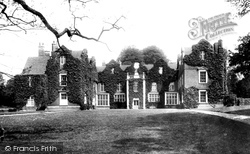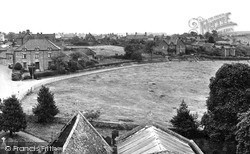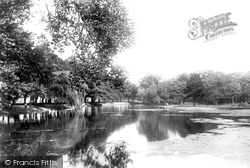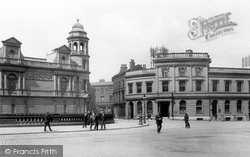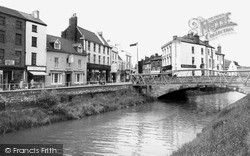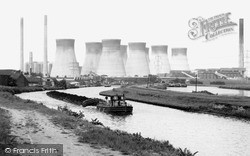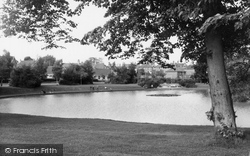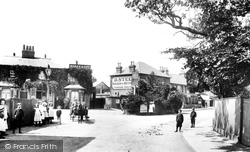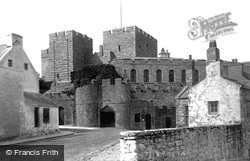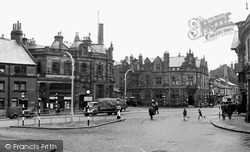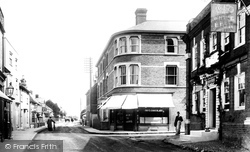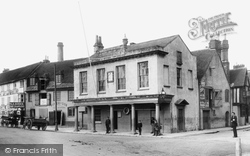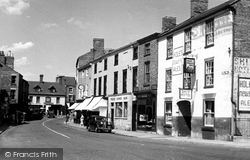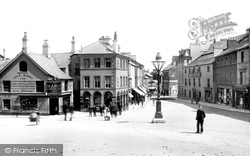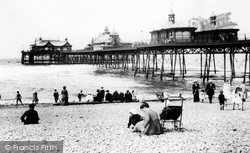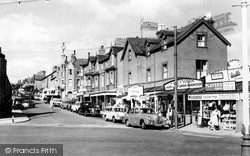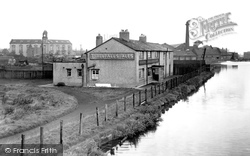Places
26 places found.
Those places high-lighted have photos. All locations may have maps, books and memories.
- Town End, Derbyshire
- Town End, Buckinghamshire
- Town's End, Somerset
- Towns End, Dorset
- Town End, Merseyside
- Town End, Cambridgeshire
- Town's End, Buckinghamshire
- West End Town, Northumberland
- Bolton Town End, Lancashire
- Kearby Town End, Yorkshire
- Town End, Cumbria (near Grange-Over-Sands)
- Town End, Cumbria (near Bowness-On-Windermere)
- Town End, Yorkshire (near Huddersfield)
- Town End, Yorkshire (near Wilberfoss)
- Town End, Cumbria (near Appleby-in-Westmorland)
- Town's End, Dorset (near Melbury Osmond)
- Town's End, Dorset (near Swanage)
- Town End, Cumbria (near Ambleside)
- Town End, Cumbria (near Lakeside)
- Town End, Cumbria (near Kirkby Lonsdale)
- Town End, Cumbria (near Ambleside)
- Town's End, Dorset (near Bere Regis)
- West-end Town, South Glamorgan
- Townend, Derbyshire
- Townend, Strathclyde (near Dumbarton)
- Townend, Staffordshire (near Stone)
Photos
23 photos found. Showing results 2,561 to 23.
Maps
195 maps found.
Books
3 books found. Showing results 3,073 to 3.
Memories
3,719 memories found. Showing results 1,281 to 1,290.
Raven Hotel And Clarendon Hotel Annex
I like to say I was born in the Raven though it wasn't strictly true as I was born in a nursing home at Stourport. But my mum was the housekeeper there and my dad was handyman, and we lived in a flat in the ...Read more
A memory of Droitwich Spa in 1950 by
Freemans Jewlwers Shop.
My father, Mr Childerley, worked here during the mid 50's serving as an apprentice carpenter, working for the firm Evans and Sons in Cambridge Street. A school master lived in the Jeweller's before the work was carried out. ...Read more
A memory of St Neots in 1956 by
Living In Wood Street
I was born in Thorpe Coomb in 1949 and I lived in Cuthbert Rd until they pulled most of the houses down in the mid 60s, we moved to St David's court on the corner of Wood St and Forest Rd, they were 11 story flats we were on ...Read more
A memory of Walthamstow by
Evacuee........
I arrived, along with my brother John and sister Lily at the outbreak of war. A big adventure we were told, but oh so frightening. Our mother had told us to stay together, and lucky for us we were taken in by Mr. and Mrs. Morgan. I ...Read more
A memory of Upton Bishop in 1940 by
I Grew Up In Eltham
My family moved to Eltham about 1954/5 and I lived there until about 1966. I attended Middle Park Primary School and later the Gordon School. We lived next door to Working Mens Club on Eltham Hill just down from the Swimming ...Read more
A memory of Eltham in 1956 by
My Memory Of Collyhurst
My name is Denise, I lived at 14 Churnet St (bottom end) near Collyhurst Rd from 1955 until 1967 when we had to move in the clearance. We were 4 doors down from Woolams clog works, Mr Woolam used to let us in and let us ...Read more
A memory of Collyhurst in 1966 by
The Changes Over The Years.
My memories of the village are so precious that I wished it to be preserved intact with no alterations whatsoever, which of course was ridiculous. The main change is the size. When I was a child, in the '40's and 50's, ...Read more
A memory of Netherthong in 1950 by
Fareham Around 1955
I remember Fareham very well. I remember my father who was in them days a window cleaner, and everyone seem to know him. He used to start at 5am in the mornings doing the shop fronts, then the houses on until 5pm with an hour for ...Read more
A memory of Fareham in 1956 by
The Street Family
My name is Julie and my Mum and Dad are Joan and Tom Street (Mum has passed away). I have wonderful memories of Cuffley and lived there from the age of 5 to 19 years in Homewood Avenue; we moved there in 1963. My Mum loved to tread ...Read more
A memory of Cuffley in 1970 by
Mad Trolley Boys
We used to go down the rock on our home made trolleys on a Saturday afternoon to the Grand Cinema to watch stuff like; Hoppalong Cassidy, Roy Rogers, Flash Gorden and the Three Stooges. They were the good old days, no street corner yobs and muggers, life was great then, pity it ain't like that now.
A memory of Frodsham in 1951 by
Captions
5,054 captions found. Showing results 3,073 to 3,096.
Barnsley was founded by the monks of St John's Priory, Pontefract, after they had been granted the manor and rights to hold weekly markets and annual fairs.
Towyn (or Tywyn) means both 'an extent of land' and 'a thing that shines', a good description of the sand and marsh around the town.
This grim hard-featured town of grey-stone houses became a place for textile factories. It was at Haworth parsonage that the three Bronte sisters, Charlotte, Emily and Anne lived and worked.
This grim hard-featured town of grey-stone houses became a place for textile factories. It was at Haworth parsonage that the three Bronte sisters, Charlotte, Emily and Anne lived and worked.
In 1893 the house and park were offered for sale. The house was purchased and given to the town in 1895 by Felix Cobbold, on condition that the Corporation bought the park.
As the town grew further away from the village and the parish church, a new Anglican place of worship was necessary.
Taken from the corner of Pioneer Avenue and the Rothwell Road (A6), and looking towards the town, the photograph shows the five-storey Co-operative Wholesale Corset Factory on the left and its associated
In 1857, prompted by continental initiatives, the widow of the second Marquess resolved to set 'a noble example to other towns' and present the people with a pleasure ground of 'exquisite taste and
Yorkshire Street was one of the main shopping streets in the town. Along here could be found McDonnell's store, which was the place to go for fresh Irish eggs and home-cured Irish ham.
Spalding's townscape is 'made' by the River Welland, which bisects the town. There are roads along each bank and houses face the river, giving it a slightly Dutch feel.
The new A1 bisected the town of Ferrybridge after 1967.
It was finally bought by the council in 1922 for £3,000, and became a public open space.
This is a pretty view looking up into the town. The photographer appears to have stepped into a garden and asked the inhabitants of the house to come out and pose.
Addlestone grew up in the mid 19th century with the arrival of the railway, when a few villas and many more terraces and pairs of artisan houses were built.
They sacked a number of towns, including Durham and Hartlepool, while Robert reduced England's Scottish possessions to a handful of fortresses.
The Circus, in the town centre, is where five roads meet. It has the usual mixture of banks and public houses on its corners.
This junction of two streets marks the site of the former market place, with the stolid red-brick White Lion, on the extreme right, and the King of Prussia pub along the road on the left, ready to slake
The Harbour Office dates from 1727; the first floor was extended over the pavement in 1822 to allow for a fire and chimney in the Ballast Master's office above.
An important medieval town, it declined until the early 19th century when the Horncastle Navigation Canal opened, giving access to Lincoln and Boston.
It is one of the late 18th-century settlements which developed on commons and wastes lying on the flat-topped ridgeways, after leases were granted to anyone who wanted to settle there.
A market town since the 13th century, Ulverston became a busy port during the 18th and 19th centuries, exporting slate via the country's shortest canal.
From the beach, the pier's extravagant pavilions suggest something mysterious and exotic, a world away from the industry of the nearby towns.
Rhos-on-Sea was the poorer cousin to nearby Colwyn Bay, yet it still manages an identity of its own.
The town owes its very existence to the building of the Ellesmere Canal (as it was then called) by Thomas Telford and William Jessop in the 1790s.
Places (26)
Photos (23)
Memories (3719)
Books (3)
Maps (195)




